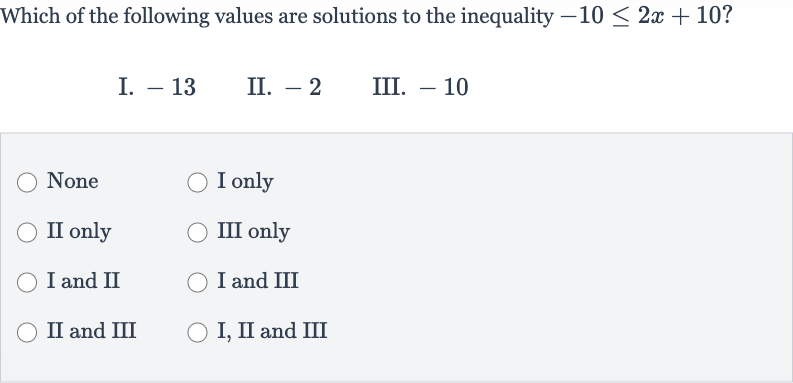Full solution
Q. Which of the following values are solutions to the inequality ?I. II. III. NoneI onlyII onlyIII onlyI and III and IIIII and IIII, II and III
- Understand and Isolate x: Understand the inequality and isolate x. The inequality given is . To find the solutions for x, we need to isolate x on one side of the inequality. Subtract from both sides of the inequality to isolate the term with x. Now, divide both sides by to solve for x. This means that any value of x that is greater than or equal to is a solution to the inequality.
- Test : Test the first value, I. . We need to check if is a solution to the inequality . is not greater than or equal to . Therefore, is not a solution to the inequality.
- Test : Test the second value, II. .We need to check if is a solution to the inequality . is greater than .Therefore, is a solution to the inequality.
- Test : Test the third value, III. .We need to check if is a solution to the inequality . is equal to .Therefore, is a solution to the inequality.
- Combine Results: Combine the results from Steps , , and to find the correct answer.From Step , we found that is not a solution.From Step , we found that is a solution.From Step , we found that is a solution.The correct answer is that the values and are solutions to the inequality.
More problems from Solutions to inequalities
QuestionGet tutor help
QuestionGet tutor help
QuestionGet tutor help
QuestionGet tutor help
QuestionGet tutor help
QuestionGet tutor help
QuestionGet tutor help
QuestionGet tutor help

